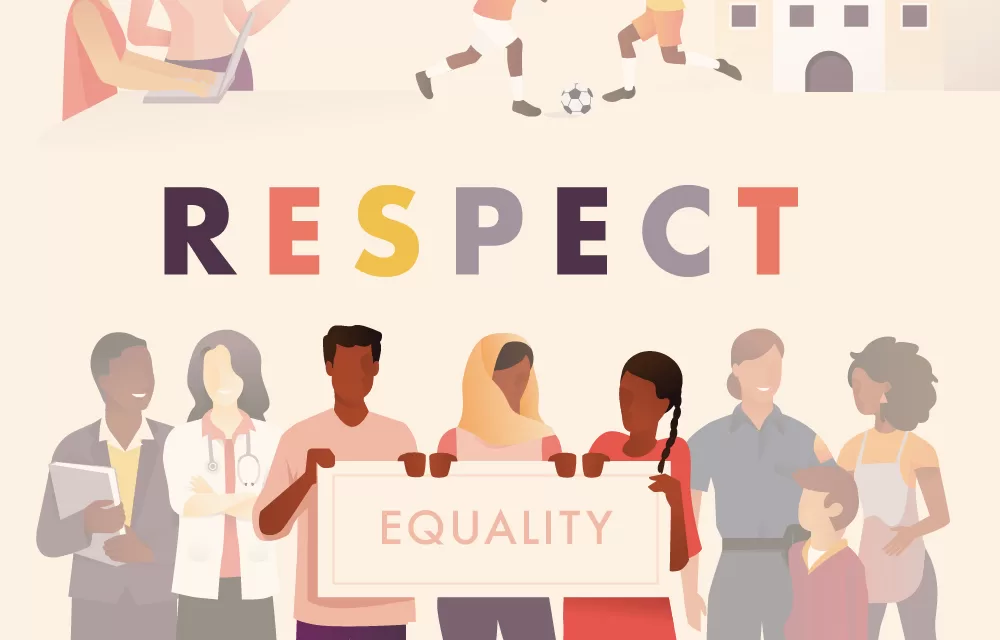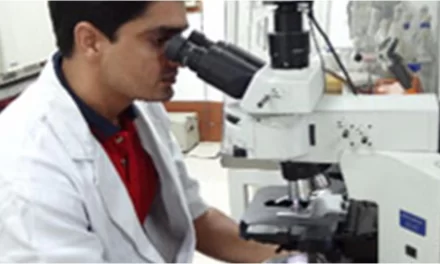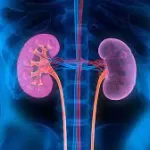16 Days of Activism against Gender-Based Violence
25 November to 10 December 2024
Ending violence against women is possible, but only if we act together, now
16 Days of Activism against Gender-Based Violence is a key international moment to call for an end to violence against women and girls (VAWG). It runs from 25th November (the International Day for the Elimination of Violence Against Women) until 10th December, Human Rights Day.
Violence against women happens in every country and culture, causing harm to millions of women and girls. Risks and challenges to access care increase even more for women and girls living in humanitarian emergencies. Around the world today, prolonged and intense conflicts have resulted in a continuous rise in of all forms of gender-based violence.
WHO plays an active role in strengthening health systems and local health partner capacity to prevent and respond to VAWG in humanitarian emergencies. In addition, WHO is calling for all parties to respect their obligations under international humanitarian and human rights law to protect women and girls from gender-based violence and ensure access to essential health services.
Key facts
- Violence against women – particularly intimate partner violence and sexual violence – is a major public health problem and a violation of women’s human rights.
- Estimates published by WHO indicate that globally about 1 in 3 (30%) of women worldwide have been subjected to either physical and/or sexual intimate partner violence or non-partner sexual violence in their lifetime.
- Most of this violence is intimate partner violence. Worldwide, almost one third (27%) of women aged 15-49 years who have been in a relationship report that they have been subjected to some form of physical and/or sexual violence by their intimate partner.
- Violence can negatively affect women’s physical, mental, sexual, and reproductive health, and may increase the risk of acquiring HIV in some settings.
- Violence against women is preventable. The health sector has an important role to play to provide comprehensive health care to women subjected to violence, and as an entry point for referring women to other support services they may need.
Key messages
- Prolonged and intense conflicts around the world, alongside major displacements, are increasing risks of violence for millions of women and girls. Gender-based violence prevention and support for survivors are essential in every humanitarian response.
- During emergencies, all forms of gender-based violence can spike, including sexual and intimate partner violence. 1 in 5 refugee or displaced women and girls living in complex emergencies is estimated to have experienced sexual violence. Trafficking, abduction, and harmful practices such as female genital mutilation and child marriage also often increase during times of crisis.
- Many survivors of gender-based violence in humanitarian emergencies face immense hurdles to access essential health care and support services – whether because of destruction of infrastructure, dangers of moving through conflict zones, or fear of stigma or reprisals.
- Violence against women and girls is preventable. There is an urgent need to ensure prevention is addressed and funded in emergencies from the outset, including through engagement of health workers and front-line responders. All parties to a conflict have a responsibility to prevent and end violence against women and girls, while peace and development processes must explicitly address gender-based violence impacts and prevention.
Factors associated with intimate partner violence and sexual violence against women
Intimate partner and sexual violence is the result of factors occurring at individual, family, community and wider society levels that interact with each other to increase or reduce risk (protective). Some are associated with being a perpetrator of violence, some are associated with experiencing violence and some are associated with both.
Risk factors for both intimate partner and sexual violence include:
- lower levels of education (perpetration of sexual violence and experience of sexual violence);
- a history of exposure to child maltreatment (perpetration and experience);
- witnessing family violence (perpetration and experience);
- antisocial personality disorder (perpetration);
- harmful use of alcohol (perpetration and experience);
- harmful masculine behaviours, including having multiple partners or attitudes that condone violence (perpetration);
- community norms that privilege or ascribe higher status to men and lower status to women;
- low levels of women’s access to paid employment; and
- low level of gender equality (discriminatory laws, etc.).
Factors specifically associated with intimate partner violence include:
- past history of exposure to violence;
- marital discord and dissatisfaction;
- difficulties in communicating between partners; and
- male controlling behaviours towards their partners.
Factors specifically associated with sexual violence perpetration include:
- beliefs in family honour and sexual purity;
- ideologies of male sexual entitlement; and
- weak legal sanctions for sexual violence.
Gender inequality and norms on the acceptability of violence against women are a root cause of violence against women.
Health consequences
Intimate partner (physical, sexual and psychological) and sexual violence cause serious short- and long-term physical, mental, sexual and reproductive health problems for women. They also affect their children’s health and well-being. This violence leads to high social and economic costs for women, their families and societies. Such violence can:
- Have fatal outcomes like homicide or suicide.
- Lead to injuries, with 42% of women who experience intimate partner violence reporting an injury as a consequence of this violence (3).
- Lead to unintended pregnancies, induced abortions, gynaecological problems, and sexually transmitted infections, including HIV. WHO’s 2013 study on the health burden associated with violence against women found that women who had been physically or sexually abused were 1.5 times more likely to have a sexually transmitted infection and, in some regions, HIV, compared to women who had not experienced partner violence. They are also twice as likely to have an abortion (3).
- Intimate partner violence in pregnancy also increases the likelihood of miscarriage, stillbirth, pre-term delivery and low birth weight babies. The same 2013 study showed that women who experienced intimate partner violence were 16% more likely to suffer a miscarriage and 41% more likely to have a pre-term birth (3).
- These forms of violence can lead to depression, post-traumatic stress and other anxiety disorders, sleep difficulties, eating disorders, and suicide attempts. The 2013 analysis found that women who have experienced intimate partner violence were almost twice as likely to experience depression and problem drinking.
- Health effects can also include headaches, pain syndromes (back pain, abdominal pain, chronic pelvic pain) gastrointestinal disorders, limited mobility and poor overall health.
- Sexual violence, particularly during childhood, can lead to increased smoking, substance use, and risky sexual behaviours. It is also associated with perpetration of violence (for males) and being a victim of violence (for females).
Impact on children
- Children who grow up in families where there is violence may suffer a range of behavioural and emotional disturbances. These can also be associated with perpetrating or experiencing violence later in life.
- Intimate partner violence has also been associated with higher rates of infant and child mortality and morbidity (through, for example diarrhoeal disease or malnutrition and lower immunization rates).
Social and economic costs
The social and economic costs of intimate partner and sexual violence are enormous and have ripple effects throughout society. Women may suffer isolation, inability to work, loss of wages, lack of participation in regular activities and limited ability to care for themselves and their children.
Prevention and response
There is growing evidence on what works to prevent violence against women, based on well-designed evaluations. In 2019, WHO and UN Women with endorsement from 12 other UN and bilateral agencies published RESPECT women – a framework for preventing violence against women aimed at policy makers.
Each letter of RESPECT stands for one of seven strategies: Relationship skills strengthening; Empowerment of women; Services ensured; Poverty reduced; Enabling environments (schools, work places, public spaces) created; Child and adolescent abuse prevented; and Transformed attitudes, beliefs and norms.
For each of these seven strategies there are a range of interventions in low and high resource settings with varying degree of evidence of effectiveness. Examples of promising interventions include psychosocial support and psychological interventions for survivors of intimate partner violence; combined economic and social empowerment programmes; cash transfers; working with couples to improve communication and relationship skills; community mobilization interventions to change unequal gender norms; school programmes that enhance safety in schools and reduce/eliminate harsh punishment and include curricula that challenges gender stereotypes and promotes relationships based on equality and consent; and group-based participatory education with women and men to generate critical reflections about unequal gender power relationships.
RESPECT also highlights that successful interventions are those that prioritize safety of women; whose core elements involve challenging unequal gender power relationships; that are participatory; address multiple risk factors through combined programming and that start early in the life course.
To achieve lasting change, it is important to enact and enforce legislation and develop and implement policies that promote gender equality; allocate resources to prevention and response; and invest in women’s rights organizations.
Role of the health sector
While preventing and responding to violence against women requires a multi-sectoral approach, the health sector has an important role to play. The health sector can:
- advocate to make violence against women unacceptable and for such violence to be addressed as a public health problem;
- provide comprehensive services, sensitize and train health care providers in responding to the needs of survivors holistically and empathetically;
- prevent recurrence of violence through early identification of women and children who are experiencing violence and providing appropriate referral and support;
- promote egalitarian gender norms as part of life skills and comprehensive sexuality education curricula taught to young people; and
- generate evidence on what works and on the magnitude of the problem by carrying out population-based surveys, or including violence against women in population-based demographic and health surveys, as well as in surveillance and health information systems.
What you can do
Ensure gender-based violence prevention and response measures are integrated and funded as an essential standard in humanitarian responses.
Raise visibility of the heightened risks of gender-based violence in emergencies, and the long-term health impacts.
Call on all parties to meet their obligations to prevent violence against women and girls during emergencies, and protect access to essential services that meet the needs of survivors.











